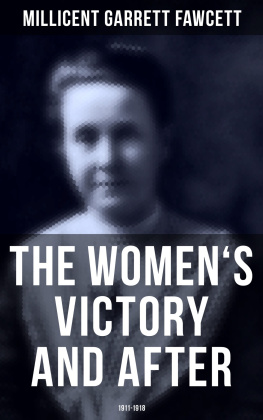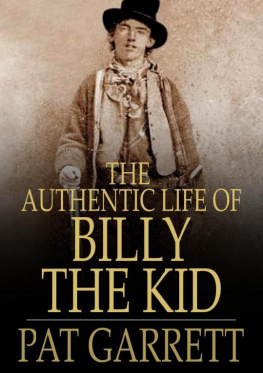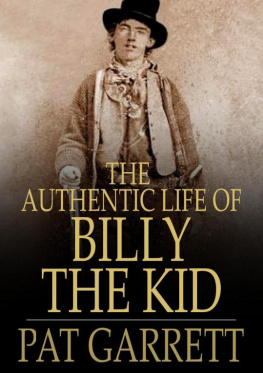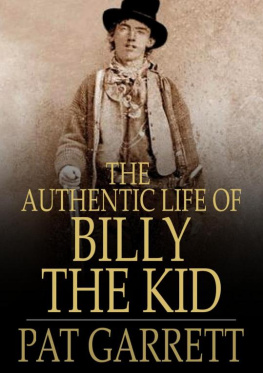ACKNOWLEDGMENTS
My sincerest thanks to George Fitzpatrick, Albuquerque, New Mexico, for his help and encouragement. To Mrs. Frederick R. Brown, Albuquerque, for the loan of photographs. To Mrs. Norman Blower, El Paso, Texas, for pictures and information. To Mrs. Howard Murphy, Roswell, New Mexico, for invaluable information. Special thanks to my sister, Betty Johnson, who typed the manuscript.
COPYRIGHT 1983 BY RUTH K. HALL.
All Rights Reserved.
No part of this book may be reproduced in any form or by any electronic or mechanical means including information storage and retrieval systems without permission in writing from the publisher, except by a reviewer who may quote brief passages in a review.
REVISED EDITION
Printed in the United States of America
Library of Congress Cataloging in Publication Data:
Hall, Ruth K.
A place of her own.
Bibliography:
1. Garrett, Elizabeth, 1885?-1947. 2. ComposersUnited StatesBiography. 3. Musicians, Blind
United StatesBiography. I. Title.
ML410.G1693H 1983 784.5'00924 [ B] 83-5104
ISBN 0-913270-68-7
ISBN 978-1-6113965-2-2 (e-book)
Published in 1983 by Sunstone Press / Post Office Box 2321 / Santa Fe, New Mexico 87504-2321
To Richard my husband
whose encouragement made it possible.
INTRODUCTION
Elizabeth Garrett was born blind. She never saw with her eyes. Everything she learned came to her through her senses of touch, hearing, smelling and that elusive sixth sense which some call feeling. For those of us who came to know trees and flowers, sky and earth, friends, family, mountains, desert, dogs and horses merely by looking this is almost incomprehensible. But, until she learned Braille, and frequently thereafter, Elizabeth gained knowledge of the things about her by listening to other people describe them.
When someone says to a sighted person, Look at those roses, they look and see. For Elizabeth a description was necessary. When she didnt see clearly what was meant, she asked questions. Her whole life was spent in conversation so that she might see everything.
The author has written the larger part of this biography in the form of dialogue. Lengthy descriptions of people and places, related by a narrator, would not give the reader a feel for Elizabeths world. She lived with sound. Other peoples voices were her eyes; she saw through them.
Wm. Farrington
FOREWORD
Elizabeth Garrett, blind singer and composer, was the daughter of Pat Garrett, famous frontier sheriff who has been immortalized in western pictures, song and story as the man who shot the notorious outlaw, Billy the Kid.
Elizabeth was born in a turbulent era of New Mexicos territorial days, the third of eight children. Her mother was a native woman of Spanish-Indian family.
Elizabeth never knew physical sight, but she was keenly aware of the world around her. She felt no self-pity, but rather a deep sense of gratitude for her health, her talents, her close knit family, and the heritage of her beloved state.
Music was in her blood. Many compositions, which included Spanish-Mexican, Indian, cowboy and state folklore songs, as well as songs of nature and inspiring religious themes were the children of her soul and brain. As an envoy of song, her glorious voice extolled the beauties and romance of New Mexico as long as she lived.
She received many honors in return for her contributions to the cultural growth of the Southwest. She once said: My father tried to bring peace and harmony to our country with his guns; I would like to do my part with my music.
This account of her life is written from personal recollections of close friends and members of Miss Garretts family, with careful research by the author into the facts and the historical and geographical background.
AUTHORS NOTE
This book is intended primarily for young readers, with the hope that a fuller interest in the history and geography of New Mexico might be engendered. It is hoped, too, that the story of a handicapped half-Chicano girl, born at the close of a turbulent era, who was determined to make a place for herself and to become independent and self-supporting, may be of inspirational value to young people.
Only close friends of the family knew the side of Pat Garretts character that is portrayed here. Many stories have been told about this controversial man, ranging from fact to fiction, and often picturing him as ruthless, cruel, even dissolute. However, Elizabeths own story, as related to friends and confidants, refutes much of this. We learn that he was devoted to his family and instilled in his children a love for learning and a strong feeling of loyalty to each other and to their state and country.
Except for the brief period in El Paso, he was never financially secure, and yet all the children except Poe, who was physically unable to attend school, received college educations in a time when this was a difficult accomplishment. This fact plainly reflects Pat Garretts influence on his family.
A PLACE OF HER OWN
The Story of Elizabeth Garrett
Chapter 1
A PLACE OF HER OWN
The Story of Elizabeth Garrett
CHAPTER 1
She was born October 12 in the mid-1880s on a ranch at Eagle Creek, a remote section of vast Lincoln County in the Territory of New Mexico.
She was a healthy baby, dimpled and chubby, with dark hair and eyes and cheeks as pink as a wild rose.
What shall we name her? Mr. and Mrs. Garrett asked each other. Five year old Ida had been given a good family name, and little Poe, almost two, was named for a close friend of Mr. Garrett.
Lets call her Elizabeth, her father said. It means Child of God. And his wife agreed; it seemed an appropriate name for this perfect little girl.
The baby was several weeks old when her mother made an alarming discovery. Her dark eyes didnt follow moving objects; there was no reaction to sudden bright light. Something was wrong!
The nearest doctors were miles away, but visits were arranged and anxious consultations held. At last, shocked and saddened, they were forced to accept the doctors verdict. Little Elizabeth was blind!
Patrick Garrett was a man of strong will and determination. She must grow up as a normal child, he said.
But how can she? Mrs. Garrett wept. She cannot see! How can she be normal?
In this house, we will never use the word blind," he said firmly. We must teach her to be like any child, happy and free from fear. When she is old enough, she must go to a special school. But that will come later.
Pat Garrett was well known throughout the Territory as the former Sheriff of Lincoln County, a fearless man of the law who had helped to rid the wild frontier of outlaws and cattle rustlers. Since his marriage to pretty Apolinaria Gutierrez, however, he had settled down to ranching.
Mrs. Garrett was sure there had never been a better husband than her tall, blue-eyed Pat. So clever, too; building their house himself, carefully selecting only the best logs. And the roof, sturdy and strong, with a foot-deep layer of mountain soil on top for insulation. There was never a prettier roof than theirs. In summer, a colorful profusion of wild flowers sprang from that soil, giving the cabin a look of riotous gaiety; and in winter, when the deep snows came, it wore a crown of white.










